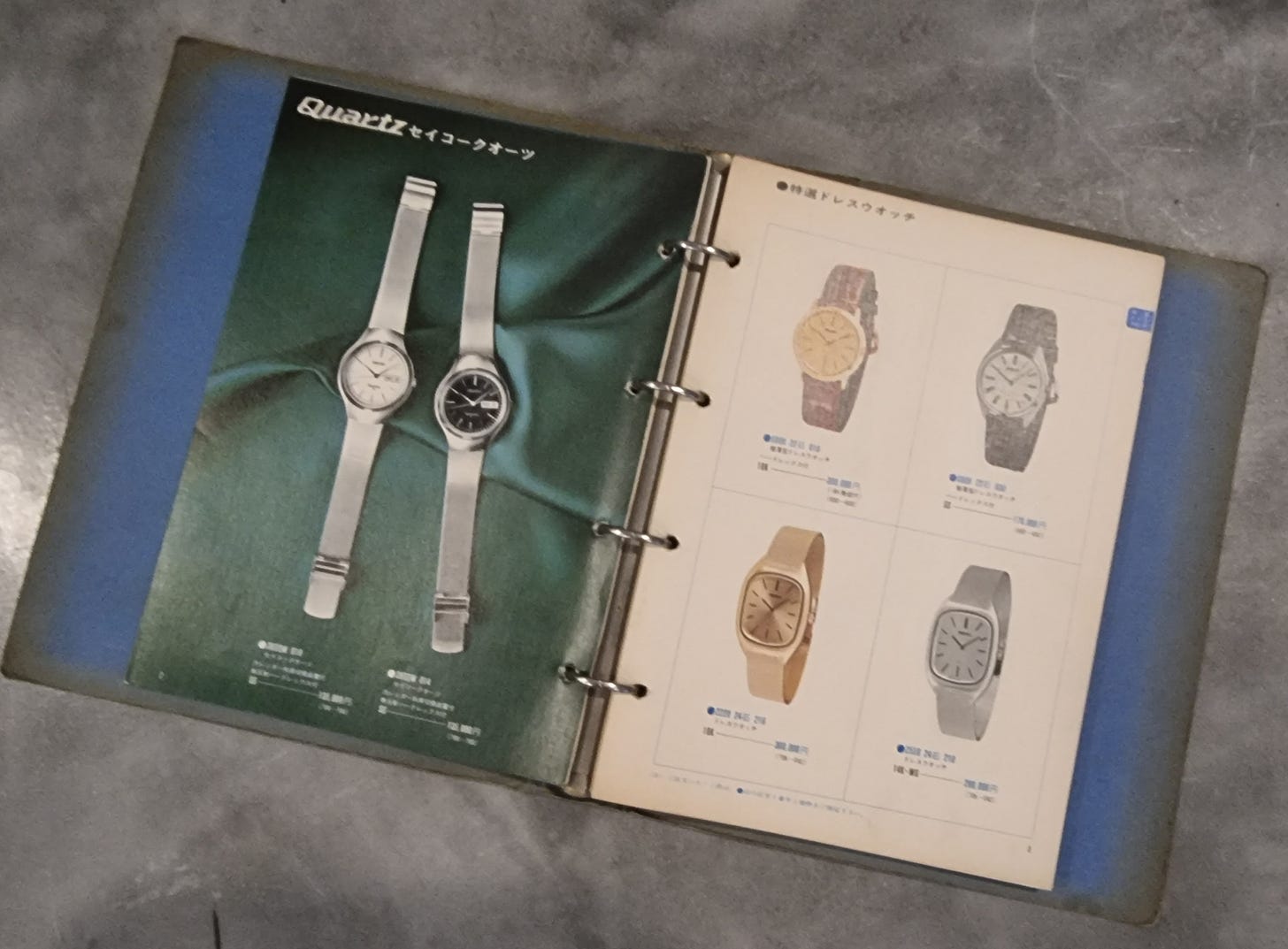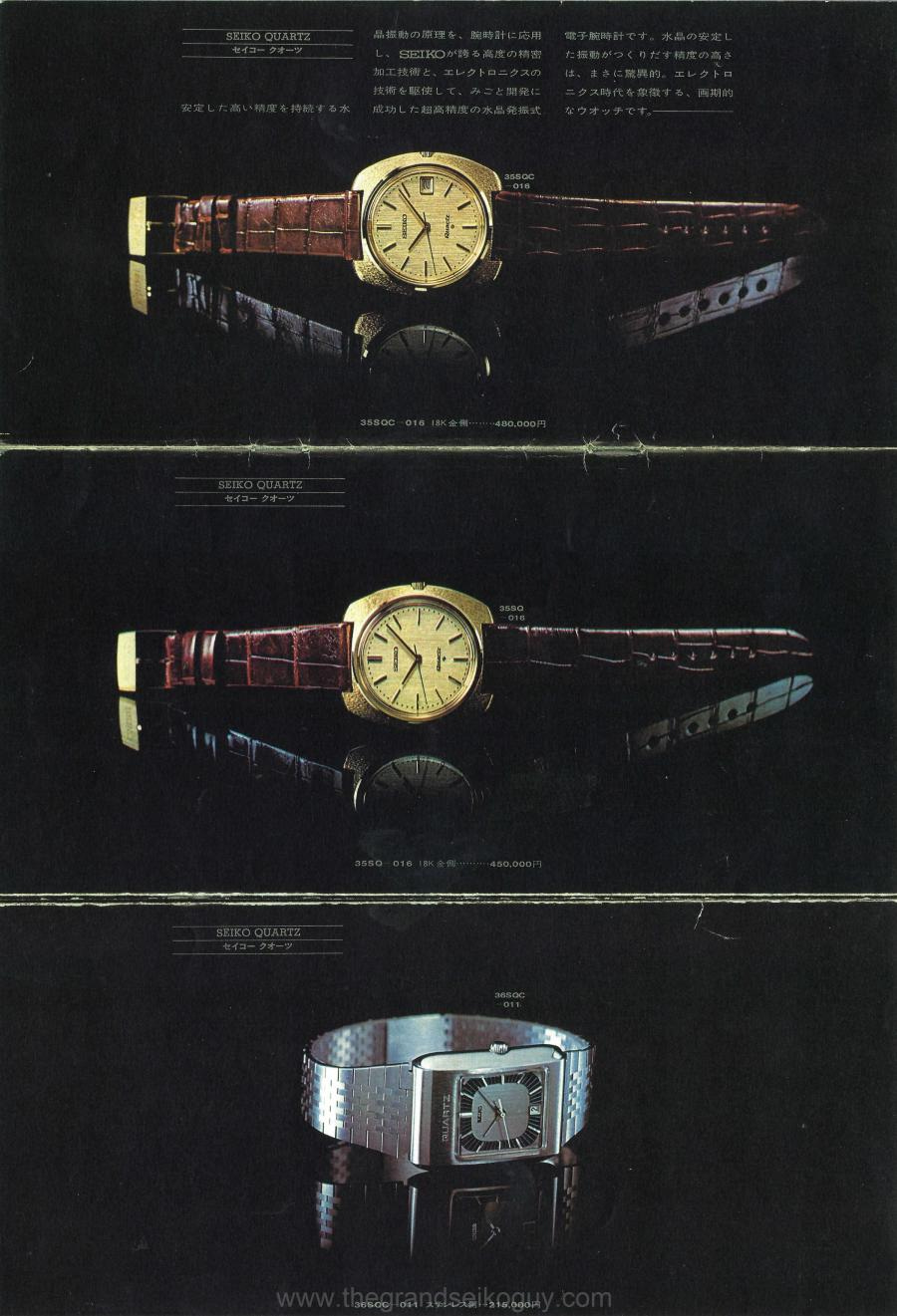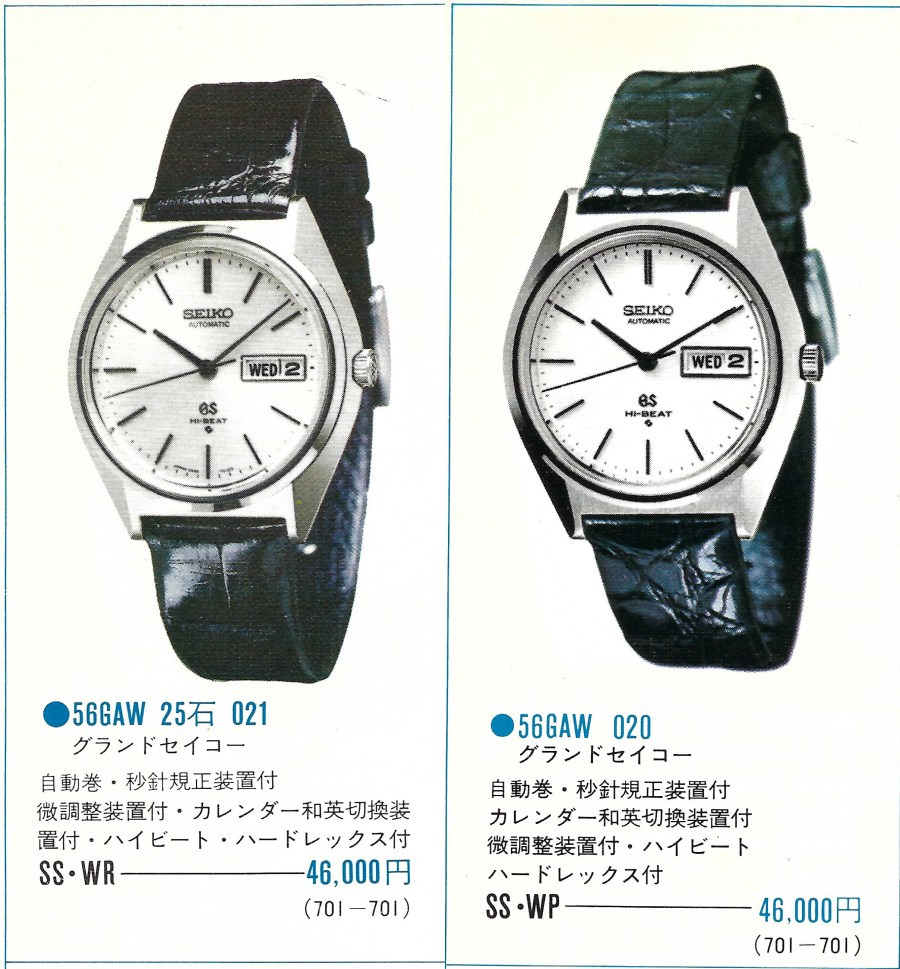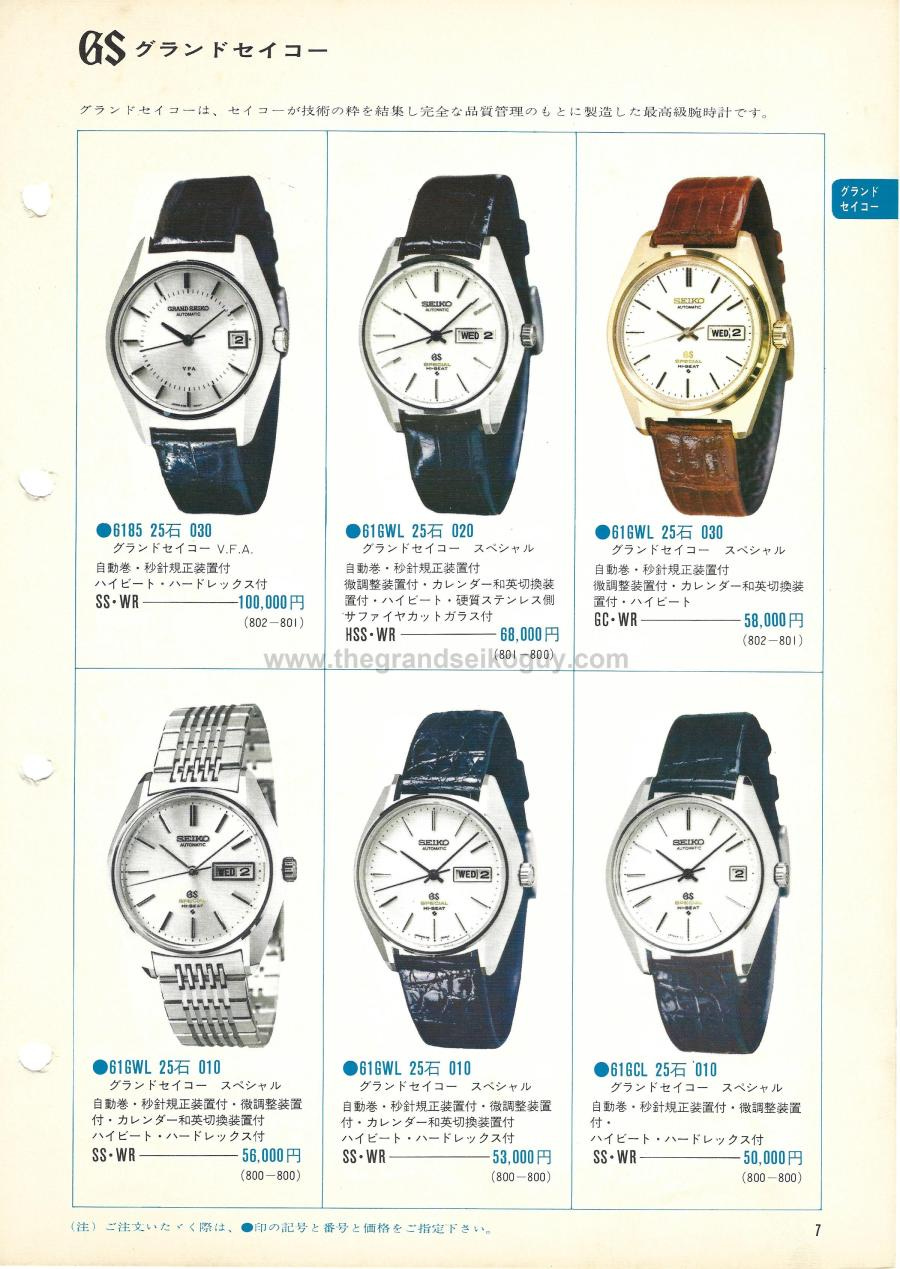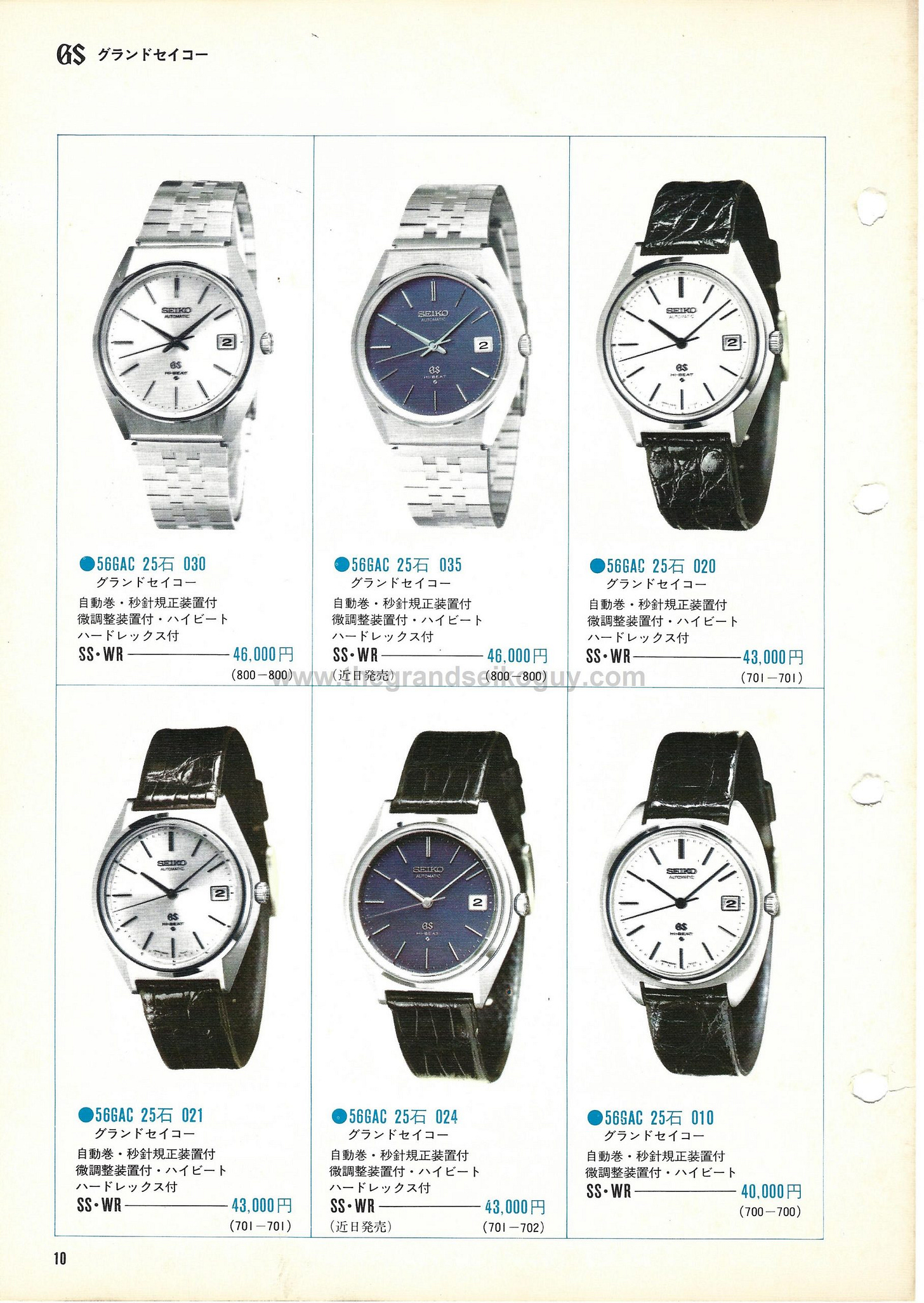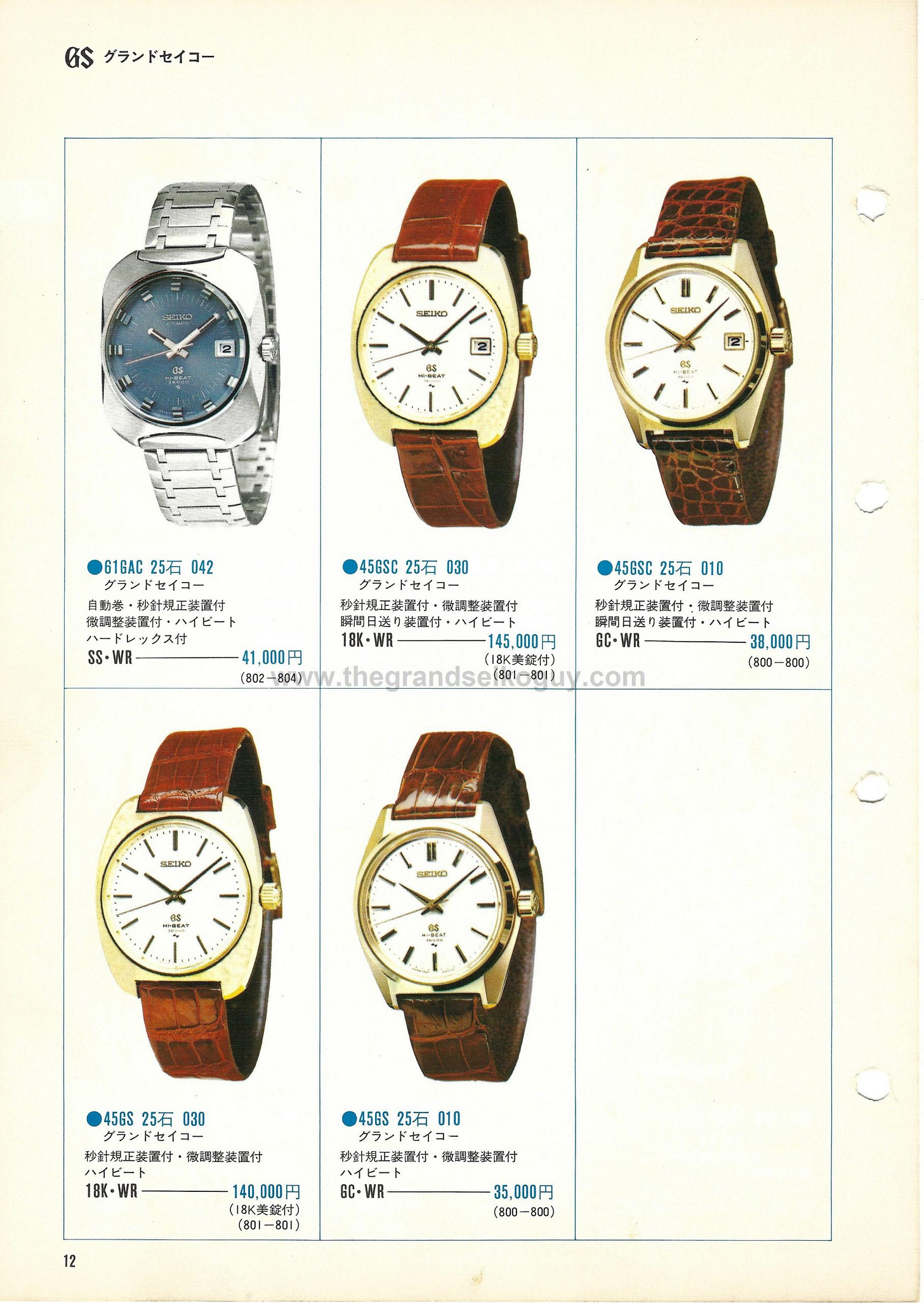Preamble
For the benefit of those subscribers who have signed up recently, each Tuesday or Wednesday I publish an article featuring scans of vintage Grand Seikos that appeared in the Seiko catalogues of the 1960’s and 1970’s.
Although based on the articles originally published on TGSG website, these articles will be updated where appropriate with additional knowledge gained in the three or so years since they were first made available.
Additionally, since I now have the complete set of the catalogues, I am able to publish these articles in the correct chronological order - something that wasn’t possible when posting to the main website since, when starting out documenting the catalogues, I hadn’t completed my collection of them.
You can view the previously published newsletters in this series here.
The Seiko 1972 Catalogue
Regular followers of this weekly newsletter will notice something different about the title of this week’s installment.
It’s simply “The Seiko 1972 Catalogue” - no mention of it being “number 1”.
The reason is that the format of the 1972 catalogue was very different to all those that proceeded it. Rather than being in a bound format, the catalogue was presented in a blue ring binder file, with hole punched pages contained within -
There is actually nothing on the binder itself to indicate that it contains the catalogue pages for the year 1972, and nor are any of the pages dated. This made identifying an example of the catalogue when it came up for sale rather a challenge - and it will be doubly so when we get to take a look at the first catalogue for 1973 in a couple of weeks’ time - but as is always the case, the content provides the necessary information for where it should reside on the library shelf.
Intermission
Whilst this series of articles is focused on the Grand Seiko references that appear in the catalogues from 1966 through to 1975, it would be remiss of me not to take a slight diversion before getting onto the Grand Seikos because, for the first time in a regular Seiko catalogue, they do not appear on the opening pages, rather, they are “demoted” by the debut in a non-“Special Luxury” catalogue of watches utilising quartz movements.
The driving force behind Grand Seiko was to create the “ideal” watch, and one of the most important aspects of that ideal was precision. It had taken pretty much a decade of continual research and development at Grand Seiko to arrive at the incredible +/- 2 seconds per day accuracy of the VFA references. The very first VFA’s were manufactured in late 1968, and when put on sale from late 1969, they were guaranteed to be accurate to +/- 1 minute per month.
And then, on Christmas Day 1969, Seiko proudly launched the world’s first quartz wristwatch – the Quartz Astron. A watch accurate to +/- 5 seconds per month.
The “quartz revolution” would take some time to get its batteries fully charged, but ultimately it would lead to the end of the vintage Grand Seiko era. As over the coming weeks I publish newsletters on the Seiko catalogues from 1972 through to 1975, I intend to use the catalogues to “keep an eye” on the progress and impact of the quartz revolution, issue by issue. Follow me on this journey with these newsletters and we are going to experience 4 of the most tumultuous years in the entire history of horology in just 3 months, at the leisurely pace of one bite a week!
A brief history of (quartz) time
Despite its introduction in 1969, it wasn’t until almost a year later that the Astron made its retail publication debut in the 1970 Special Luxury Catalogue, where both the time only and time and date variants of the 18K cased watch were featured, along side a third quartz watch – the 36SQC 011.
In the article I wrote on that catalogue I didn’t share scans of the pages that showed the quartz offerings, so here they are -
Whilst I am sure every reader will be familiar with the 35SQ and 35SQC “Astrons”, the 36SQC 011 is quite a mystery as, despite it featuring prominently in this catalogue and on the front page of the January 1971 Seiko Sales newsletter, I have never seen even a photograph of an example in the wild. And when the owner of what is unquestionably the largest collection of Seiko timepieces in the world doesn’t have one, and asked me on a visit to Japan whether I had ever seen one, one can only assume that the watch – hailed as the first wristwatch equipped with a CMOS integrated circuit – never actually made it to market.
That no quartz timepieces were featured in the 1971 regular catalogues is very informative. When one reads about the “quartz crisis” that was instigated by the introduction of the Astron, one often is given the impression that pretty much overnight the watch world was turned on its head. But clearly – and once more, this is where detailed research into the Seiko catalogues of the time can prove to be such an educationally rewarding endeavour – this is not the case.
The 1971 Special Luxury Catalogue featured the same four quartz timepieces that we will see leading the regular 1972 publication.
When one considers that both these catalogues were in production close to two years after the introduction of the Astron, it gives some perspective on just how long it took the quartz revolution to get off the ground. Clearly there were significant technical hurdles to overcome before quartz would go mainstream, hurdles we believe are exemplified by the apparent cancellation of the release of the 36SQC 011, and the reported reliability issues with the original Astrons.
Let’s take a look at the watches that demoted the Grand Seikos to the inner pages of the catalogue.
35SQC 020, 35SQ 020
The 1972 catalogue kicks off with two steel-cased watches that presumably were intended to replace the original Astrons in the range (the Astron’s sole appearance was in the 1970 Special Luxury Catalogue). It can be assumed that the release of the same movements in steel cased watches at a considerably lower price than the 18K gold cased original Astrons was a sign that production of the movements had improved considerably, and Seiko felt confident about widening the availability of watches powered by this new technology. The two watches are however very rare to find available today - especially in running condition.
The second page of the catalogue introduces two references based on a new caliber – the 3823. Based on the number of references released with this movement over the next couple of years, and the relative commonality of working watches one sees on the collectors market today, it is clear that Seiko had made great strides in their quartz technology and reliability in the two short years since the introduction of the Astron.
With the next 4 pages of the catalogue populated by Ultra-thin Dresswatches and watches cased in precious metals, it is not until page 7 that we finally get to see the Grand Seikos.
The Grand Seikos
A total of 36 Grand Seiko references feature in this catalogue - 35 mens, and one ladies. As per usual, I will be focusing on the changes from the previous catalogue, highlighting the watches that debut here, and also mentioning those that were dropped from the range.
A VFA, and the Specials
The 1972 catalogue featured the final appearance of a time and date VFA in a regular catalogue, and indeed we will not see another Grand Seiko VFA in a regular catalogue until 1974.
The model featured – whilst sharing the same catalogue code of 6185 030 – is different to the one pictured in 1971’s number 2 and Special luxury catalogues -
As can be seen in the above comparison – with the earlier reference on the left, and the one from this catalogue on the right – there are a few key differences on the dials of the two watches that should be highlighted.
Firstly, the newer reference has the text “VFA” above the Suwa logo, and secondly, the Suwa logo itself is printed on the dial, rather than applied as it is on the earlier model.
Whilst they confusingly share the same catalogue code, the two models do have different movement-case references. The earlier VFA has the reference 6185-8020, whereas the later one has the reference 6185-8021.
Finally, the model introduced in this catalogue has the 6185B movement, whereas that featured in earlier catalogues has the 6185A movement.
The earlier references is by far the rarer of the two.
The other five watches featured on this page are the Specials, with four of them carrying over from the previous catalogue.
The new reference, pictured above, is a day-date Special presented in a cap gold case. This model, with the movement-case reference code of 6156-8020, makes its sole catalogue appearance in this issue, and – as can be expected – is a very hard to find piece these days.
New 56GS series references
In total there are eight references in the 56GS series that are introduced in this catalogue. The first two are steel cased examples of a watch with an 18K gold case and bracelet that you may recall made its debut in the 1971 Special Luxury Catalogue featured in last week’s newsletter.
With a catalogue code of 5646-8000. the two watches pictured above only ever feature in catalogues shown on their bracelets. These days, it is fairly uncommon to come across these references still on their bracelets as presumably most have broken over the many decades that they have been around. Notably, the blue dialed watch seen here does – in almost all examples that I have seen – fade to a dark grey colour.
Once in a blue moon however, one does come across an example that retains its wonderful hue -
Back to the catalogue…
Featured on page nine of the catalogue are two more new 56GS, both with movement-case number references of 5646-7010.
On the right is a watch that is clearly new to this catalogue, with its blue dial. However, whilst at first glance the watch on the left may look familiar – a white dialed example of this reference was first introduced in the 1970 volume 2 supplement – it actually has a silvered dial. Without seeing the two watches catalogued side by side, it would perhaps be difficult to spot the difference, but as demonstrated in the composite image below, the sheen of the silvered dial (pictured on the left) can be clearly differentiated even in the low resolution and low dynamic range images we find in the catalogues.
Turning the page, we find another four new references pictured – they are the time and date versions of the four watches detailed above.
On the top row we see the 5645-8000’s with their silvered and blue dials. As with their 5646-8000 counterparts, these references are only ever pictured in catalogues on bracelets, and these days it is rare to come across them still intact.
The bottom row includes the 5645-7010’s with silvered and blue dials, date only examples of the 5646-7010’s introduced earlier in the article.
In addition to the watches detailed above, there are two references that make their first appearance in a regular catalogue, the 18K gold cased 5641-5000 and 5645-5000 that first appeared in the 1971 Special Luxury Catalogue (see the gallery at the foot of the article for scans of all the pages).
Dropped references
As stated earlier, there are a total of 36 Grand Seiko references featured in this catalogue – the same number that appeared in volume 2 of 1971. With the 12 new references detailed above introduced, it doesn’t take a maths genius to work out that means 12 references have been dropped from the range.
Two VFA’s disappear – the 6185-8020 (with 3D indices and short hands) as mentioned earlier has been replaced by the 6185-8021, but also missing is the 6185-8020 with regular indices and long hands.
Intriguingly, if you flip through the scanned pages in the gallery at the bottom of this article through to the final page, you will notice that the 45GS series is represented solely by gold cased references (of either the solid 18K or capped variety). All 4520/2-7000 variants, with their spectacular angled cases, have been dropped; along with the oval cased 4520/2-7010’s; and the stainless steel cased 4520/2-8000.
No volume 2, but…
Whilst there would appear to be just a single volume of the 1972 catalogue, its hole-punched pages and ring binder design meant it was possible to add to it additional pages.
I’m not sure at what point in the year it happened - very possibly it was mid-year when usually the second catalogue of the year would have been published - but there are 17 supplemental sheets (34 pages) to the catalogue.
These pages are numbered, with suffixes, to indicate where in the catalogue the pages should be inserted. They feature no Grand Seikos however, so there is nothing additional to cover in this article.
To be continued…
As discussed at the top of this article, the 1972 Seiko Catalogue marks a turning point in the history of the vintage Grand Seiko range. As we will discover in the coming newsletters on the subsequent catalogues, the introduction of quartz really does start to decimate the Grand Seiko offer, with the number represented in the next regular catalogue dropping by almost half.
From 1970 through to 1972, these newsletters detail no fewer than 47 new Grand Seiko references debuting in the catalogues.
From 1973 through to 1975, just 11 new models would be introduced in the catalogues.
Gallery
Presented below are scans of all the pages from the Seiko 1972 Catalogue featuring Grand Seiko references.





